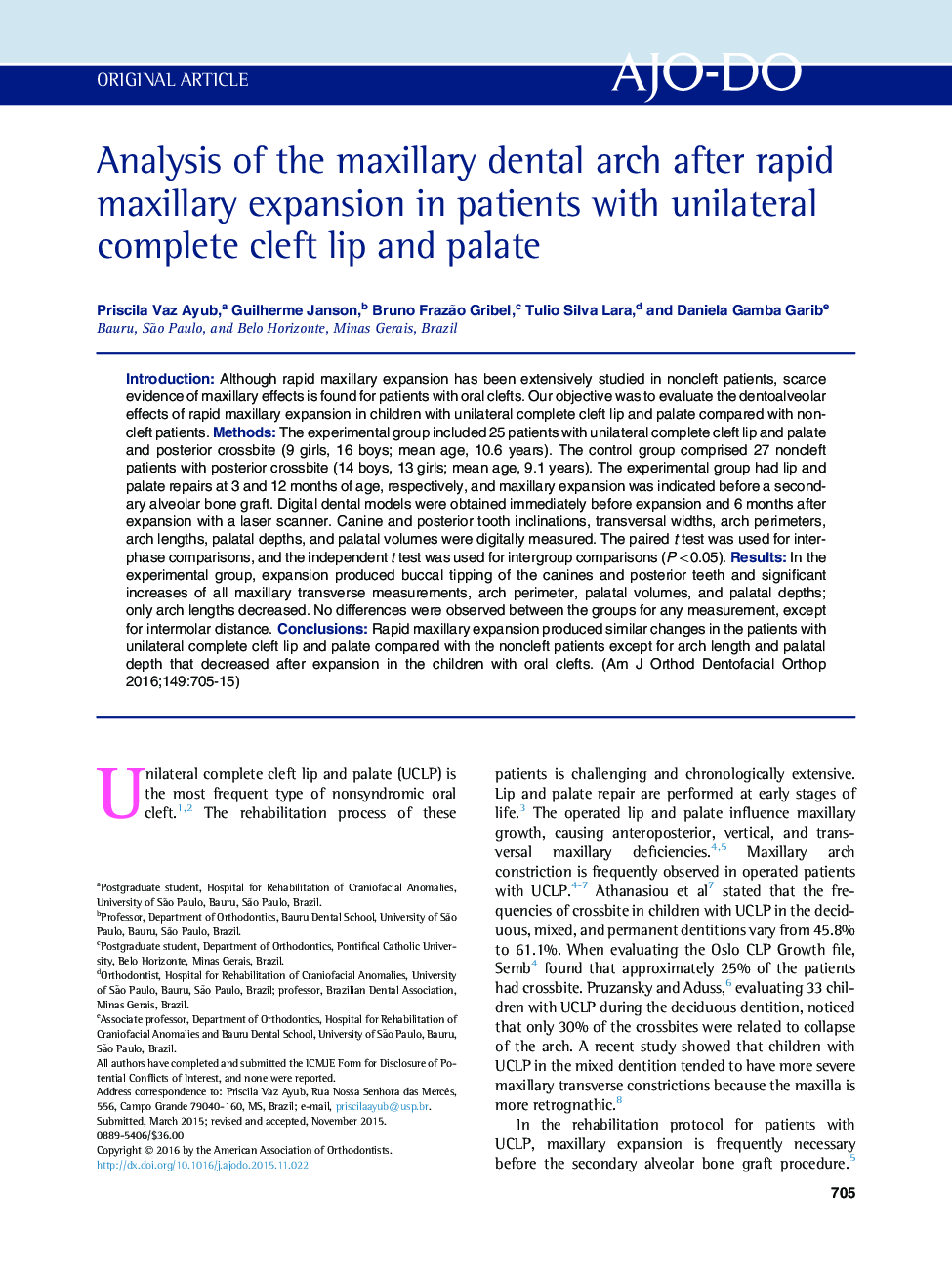| Article ID | Journal | Published Year | Pages | File Type |
|---|---|---|---|---|
| 3115304 | American Journal of Orthodontics and Dentofacial Orthopedics | 2016 | 11 Pages |
•Dentoalveolar effect of hyrax rapid maxillary expansion (RME) was studied in children with cleft lip and palate.•Maxillary arch width, arch perimeter, and palatal volume increased in the unilateral complete cleft lip and palate (UCLP) group.•Arch length decreased in the UCLP group.•Canine and posterior teeth tipped buccally in the UCLP group.•Dentoalveolar effects of RME were similar in children with and without UCLP.
IntroductionAlthough rapid maxillary expansion has been extensively studied in noncleft patients, scarce evidence of maxillary effects is found for patients with oral clefts. Our objective was to evaluate the dentoalveolar effects of rapid maxillary expansion in children with unilateral complete cleft lip and palate compared with noncleft patients.MethodsThe experimental group included 25 patients with unilateral complete cleft lip and palate and posterior crossbite (9 girls, 16 boys; mean age, 10.6 years). The control group comprised 27 noncleft patients with posterior crossbite (14 boys, 13 girls; mean age, 9.1 years). The experimental group had lip and palate repairs at 3 and 12 months of age, respectively, and maxillary expansion was indicated before a secondary alveolar bone graft. Digital dental models were obtained immediately before expansion and 6 months after expansion with a laser scanner. Canine and posterior tooth inclinations, transversal widths, arch perimeters, arch lengths, palatal depths, and palatal volumes were digitally measured. The paired t test was used for interphase comparisons, and the independent t test was used for intergroup comparisons (P <0.05).ResultsIn the experimental group, expansion produced buccal tipping of the canines and posterior teeth and significant increases of all maxillary transverse measurements, arch perimeter, palatal volumes, and palatal depths; only arch lengths decreased. No differences were observed between the groups for any measurement, except for intermolar distance.ConclusionsRapid maxillary expansion produced similar changes in the patients with unilateral complete cleft lip and palate compared with the noncleft patients except for arch length and palatal depth that decreased after expansion in the children with oral clefts.
